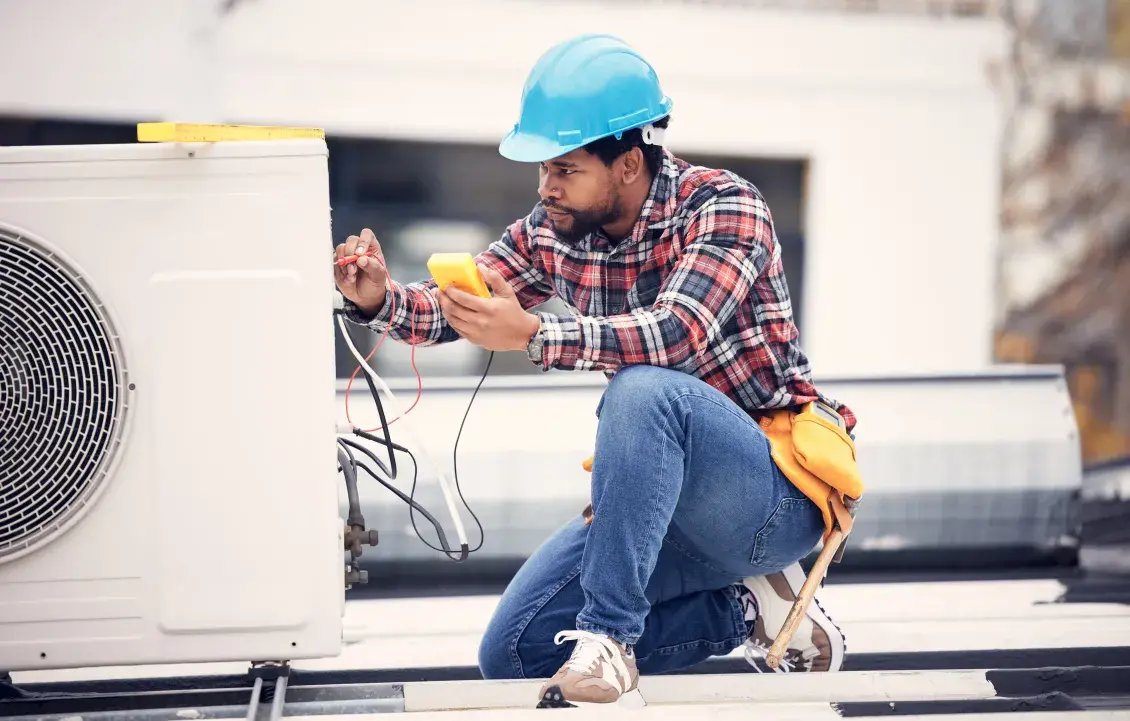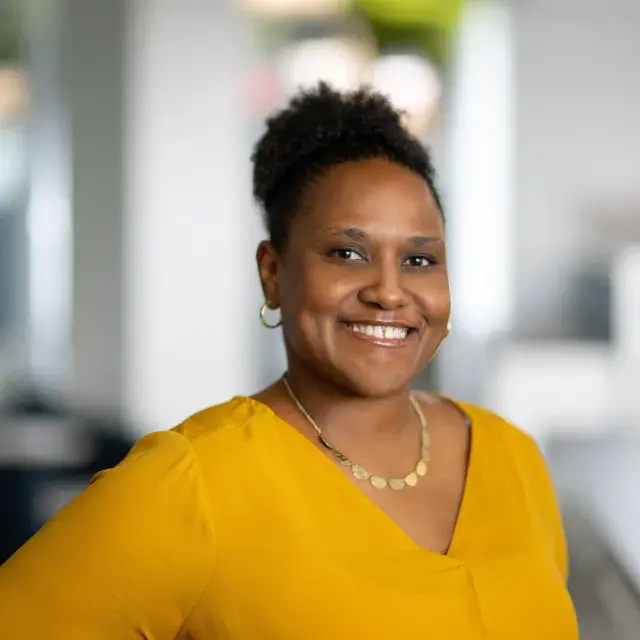As the affordable housing sector embraces the benefits of decarbonization, demand for green jobs mounts and workforce development programs are stepping up to train workers for these careers of the future. But leaders working at the intersection of housing and green jobs must overcome key challenges to ensure an equitable transition and fair access to this fast-growing segment of the economy.
Enterprise CEO and President Shaun Donovan believes we are at a point of enormous opportunity to address the climate crisis while creating green jobs that will drive economic mobility and have real impact on families and communities.
“One of the opportunities is to take the climate moment and turn it into an affordable housing moment and a jobs with justice moment,” Donovan said recently during remarks at the Climate Jobs Summit in New York. “Particularly in a place like housing, which has not been a source of good, safe, family-sustaining jobs over the years, this is an opportunity we are not going to get again.”
Over the last few years, the federal government has made more than $4 trillion in investments through the Inflation Reduction Act and Infrastructure Investment and Jobs Act, paving the way for local climate jobs and a stronger labor movement through requirements for apprenticeships and prevailing wages, Donovan said.
Community Workforce Agreements
Organizations have stepped up to prepare people for this new wave of work. Emerald Cities Collaborative (ECC) has focused on training electricians and HVAC technicians because of growing demand for energy efficiency and building electrification work, said Steve Gelb, ECC’s Northwest regional director. His organization works to advance a sustainable environment while creating sustainable, just, and inclusive economies. To ensure a project benefits the community it serves, they negotiate community workforce agreements or community benefit agreements with developers to prioritize local hires and diversity.
“Certain trades are more diverse than others and unfortunately—and not surprisingly— in general, lower-wage, lower-skilled trades are more diverse than the higher paid trades,” Gelb said. “And that’s not the fault of those who have been excluded, but the fault of those who have been doing the excluding.”
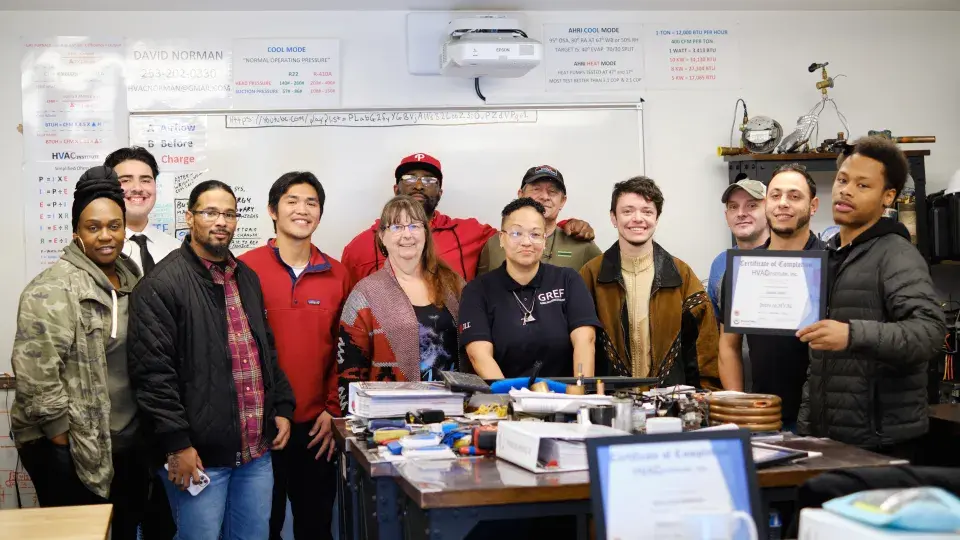
Black, Indigenous and people of color face many obstacles when it comes to training, education, and careers, so it is critical to provide wraparound services such as child care, transportation, and assistance with skills like resume writing and interview preparation, Gelb said. While some progressive parts of the country have prioritized training and hiring a diverse green workforce, many areas need proactive measures, such as workplace agreements, he said.
Enterprise Community Development recently completed a six-week pilot solar installer training program for nine Washington, D.C., residents who live in the communities they own and operate. Already, four people have been matched with jobs, and the hope is the program will be replicated, said Jamie Farmer, Enterprise senior program manager of economic mobility and education. Ensuring trainees have access to a career navigator is critical for success, she said.
“It’s important that we work with [workforce development] partners who understand the community we serve, and can offer support and wraparound services,” she said. “For example, when people increase their income, that can increase their rent and can trigger other benefits, so it’s important to have those conversations up front.”
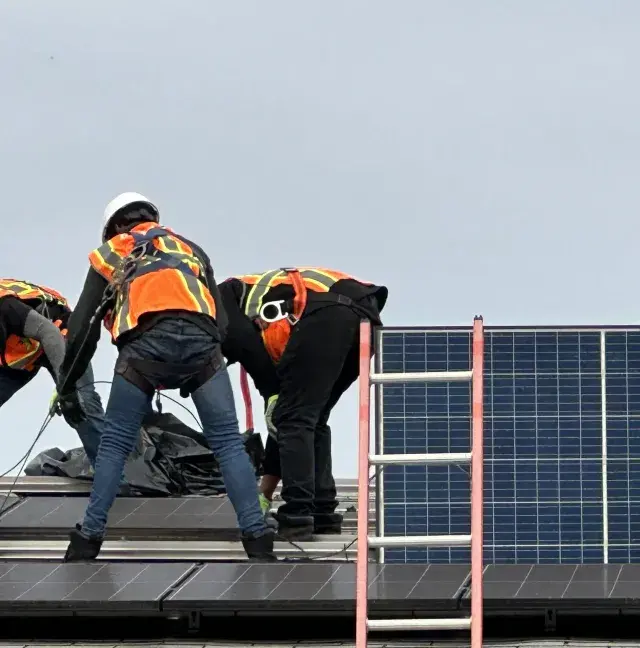
There were more than 8 million renewable-energy jobs in 2022, and the field grew faster than overall U.S. employment in 2022 and 2021. On average, green jobs pay better—one study found that energy efficiency subsectors earned a wage premium of 23-25% above national wages.
Growing Demand
According to one estimate, demand for green jobs in the United States increased by 50% since 2019, and more growth is expected. The Bureau of Labor Statistics predicts expansion will persist through 2032, with jobs for solar installers increasing by more than 22% and electricians by more than 6%.
But making sure the jobs reach everyone remains a challenge. The World Energy Employment Report found that women were strongly underrepresented in the energy sector. The clean energy start-ups showed signs of change, however, with a greater share of women founders and inventors.
Leaders across housing and green jobs emphasized that diversity and equity must be top priorities. Training programs and jobs must reach communities that have long been excluded or underserved, they said. For example, the Oakland-based GRID Alternatives focuses on reaching marginalized groups through workforce development programs such as the Tribal Solar Accelerator Fund and the Women in Solar Program.
The Chicago-based Elevate, which seeks to create a just and equitable world where everyone has clean and affordable, heat, water and power, is also working to create opportunities for people who have traditionally been left out of the clean energy sector. The nonprofit recently piloted a program providing loans to minority contractors, addressing a financial gap that occurs while waiting to get paid for completed projects. Participants also got support with balance sheets, invoicing, and other small business accounting processes, said Abigail Corso, Elevate’s chief strategy officer.
One Million Building Jobs
The IRA is expected to create over 9 million jobs over the next decade, including nearly one million through efforts to make buildings more energy efficient and climate resilient.
The infusion of jobs brings an enormous short-term need to find, train, and place qualified workers, said Enterprise VP of Building Resilient Futures Krista Egger, underscoring the scope and urgency of the challenge. “Training takes time and there’s a limited amount of time to spend the IRA funds,” she said. “We can’t risk having developers bypass the shift to electrification because they cannot find people who are equipped to do the work.”
The IRA and the bipartisan infrastructure bill offer a groundbreaking possibility to address the climate crisis through quality jobs: 54 programs totaling $75 billion across the two laws to advance green workforce development activities, according to research from the Brookings Institution. And the Justice40 Initiative—which mandates that 40 percent of certain federal funding flow to disadvantaged communities—aims to tackle deeply rooted inequities.
“When you see the notice of funding opportunity coming out of the federal government, there is language that we haven’t seen before regarding justice communities, diversity, and equity, so it’s good to see that money being tied to some of these principles,” Corso said. “We can always do more, but at least we’re doing something with this unprecedented pool of funding.”
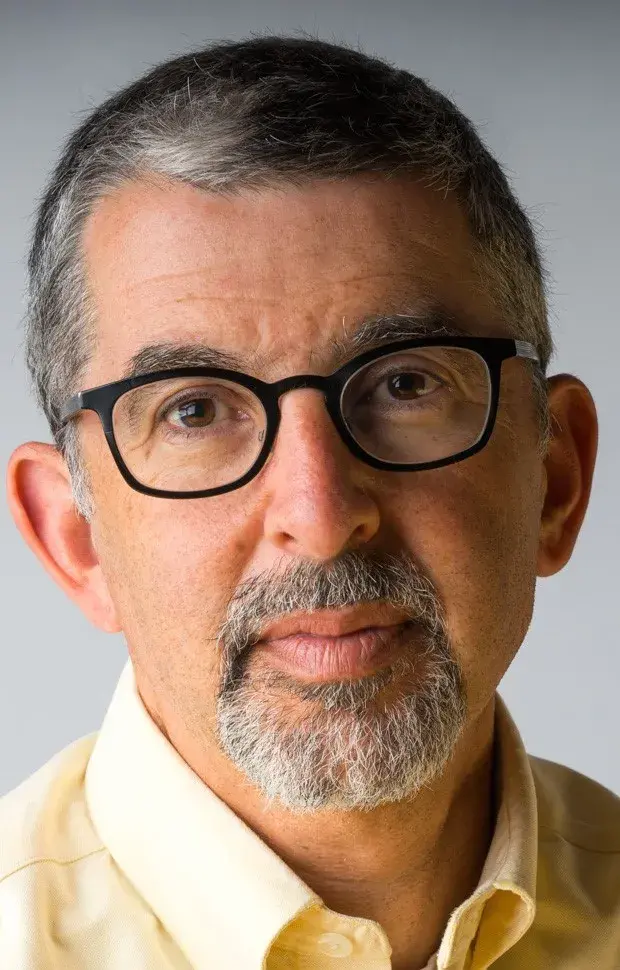
'Stacking the Impact'
ECC’s Gelb said Justice40 should be seen as a minimum goal, with everyone from construction companies to states and the federal government held accountable.
Many minority-run businesses strive to address inequality in all aspects of their work. The North Carolina-based EnerWealth Solutions is a Black woman-led company bringing solar energy to small Black farmers in the South, helping them keep land in the family and create generational wealth. For every project, the staff focuses on “stacking the impact,” carefully considering who owns the land, who it is being leased to, and who could benefit from clean energy, said Elizabeth Eichen, EnerWealth’s outreach associate.
“So many green issues are obviously interconnected to housing, to poverty, and wages, and all these issues that affect people in ways other than just, 'How is energy being created?' ” she said. “It would be a missed opportunity for people not to have these ethics when planning, hiring and collaborating with other organizations.”
While there is growing awareness about the need for workforce development programs, more resources will be key. A Brookings report looking at 50 large cities’ climate action plans found only nine of them included specific benchmarks or timelines for workforce development; only 11 included information on funding or additional support for such work.
Investing in workforce development may not seem as exciting as paying for new buildings or equipment, Corso noted, but without it, the work will simply not get done.
Vesna Jaksic Lowe has written for the New York Times, the Washington Post, and the New York Daily News. This is the fourth article in a series exploring how the affordable housing sector can maximize the potential of the IRA. Read more from the series: Decarbonizing Multifamily Housing: How State Finance Agencies Are Gearing Up for the IRA, Solar Success: How the IRA will Help Solar Gardens Power Affordable Housing and From Roadmaps to Software: Tools to Help Leverage the IRA.
